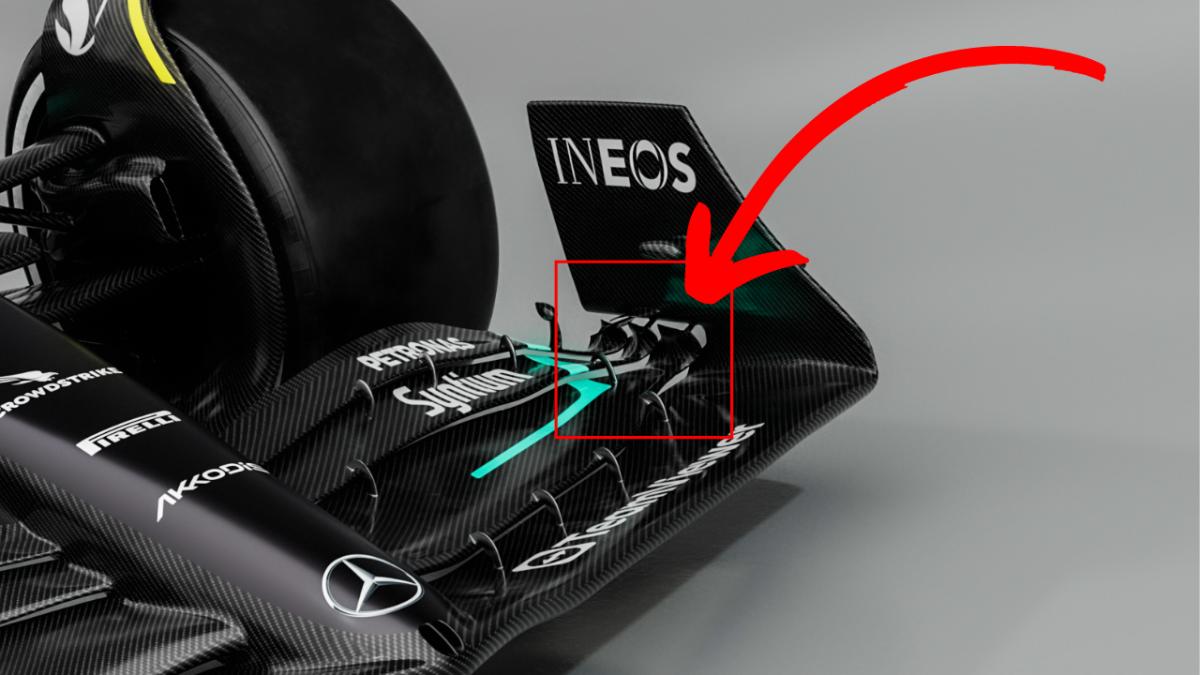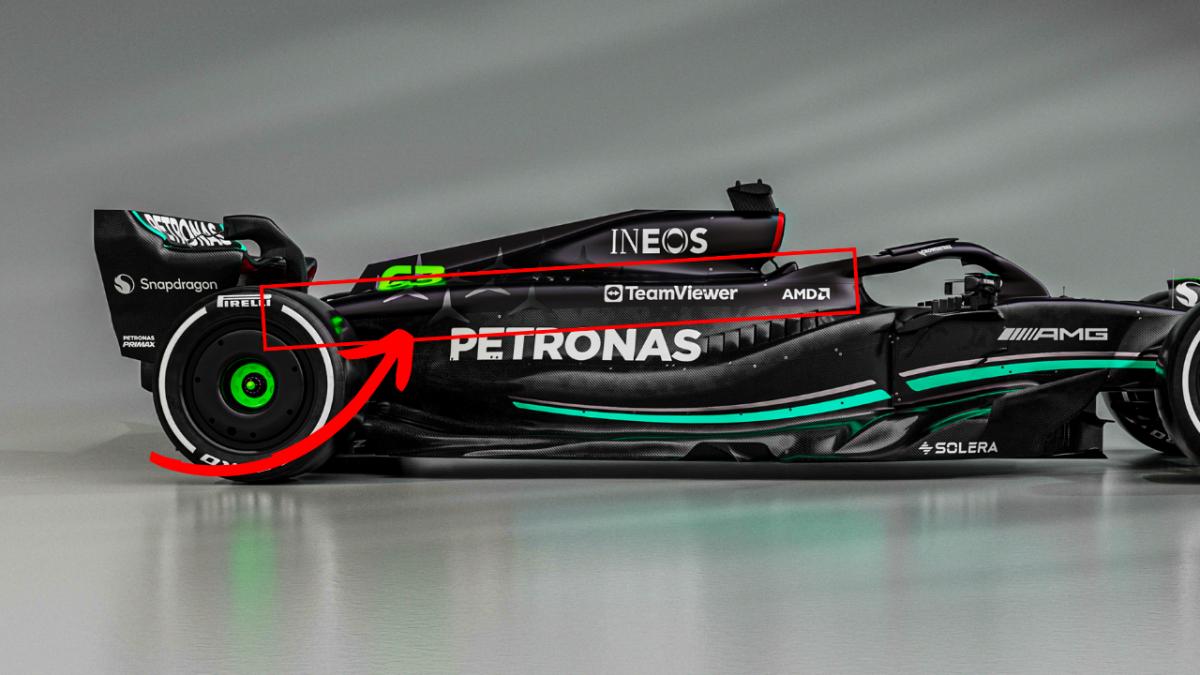Mercedes Finds Loophole That Revives Powerful Aerodynamic Concept From 2009

Mercedes has once again made a bold move in the world of F1 aerodynamics after finding a loophole in the 2023 rulebook. After years of experimentation, Mercedes has returned to this controversial and banned aerodynamic concept called 'outwash.'
This concept was used in 2009, when Jenson Button won the championship with the Brawn GP001, and has since been banned as other teams jumped on the aerodynamic approach. It involves moving large volumes of air away from the sides of the car, primarily by using a specifically shaped front wing.
In 2022, the FIA and Formula 1 introduced new regulations that mandated 'ground effect' downforce and minimised outwash. But while suffering from major porpoising and generally poor performance, Mercedes added parts to the W13's front wing that would encourage a level of outwash. It was quickly banned by the FIA before it could race.

The FIA has since provided clarification on this rule, and for 2023, cars can now add components to their front wings to introduce outwash. If the car released today is to be believed to be the real car, Mercedes has done it in a genius way by integrating them close to the endplate as structural parts.
Ferrari has also done this, albeit in a different way.
Mercedes has continued with its zero-pod design, although the general shape of this has been altered and perfected with the intake looking more square this year over last. But what sits on top of this design could also be another exploited loophole.

The channel that runs from the halo to the rear of the car looks as though it's for cooling, but the shape of this could enhance the aerodynamics of the car, producing downforce as it manages air towards the lower area of the wing.
We'll see if other teams follow suit - or rather if it works at all - but it's looking as though 2023 could be an innovative and interesting year for F1.
